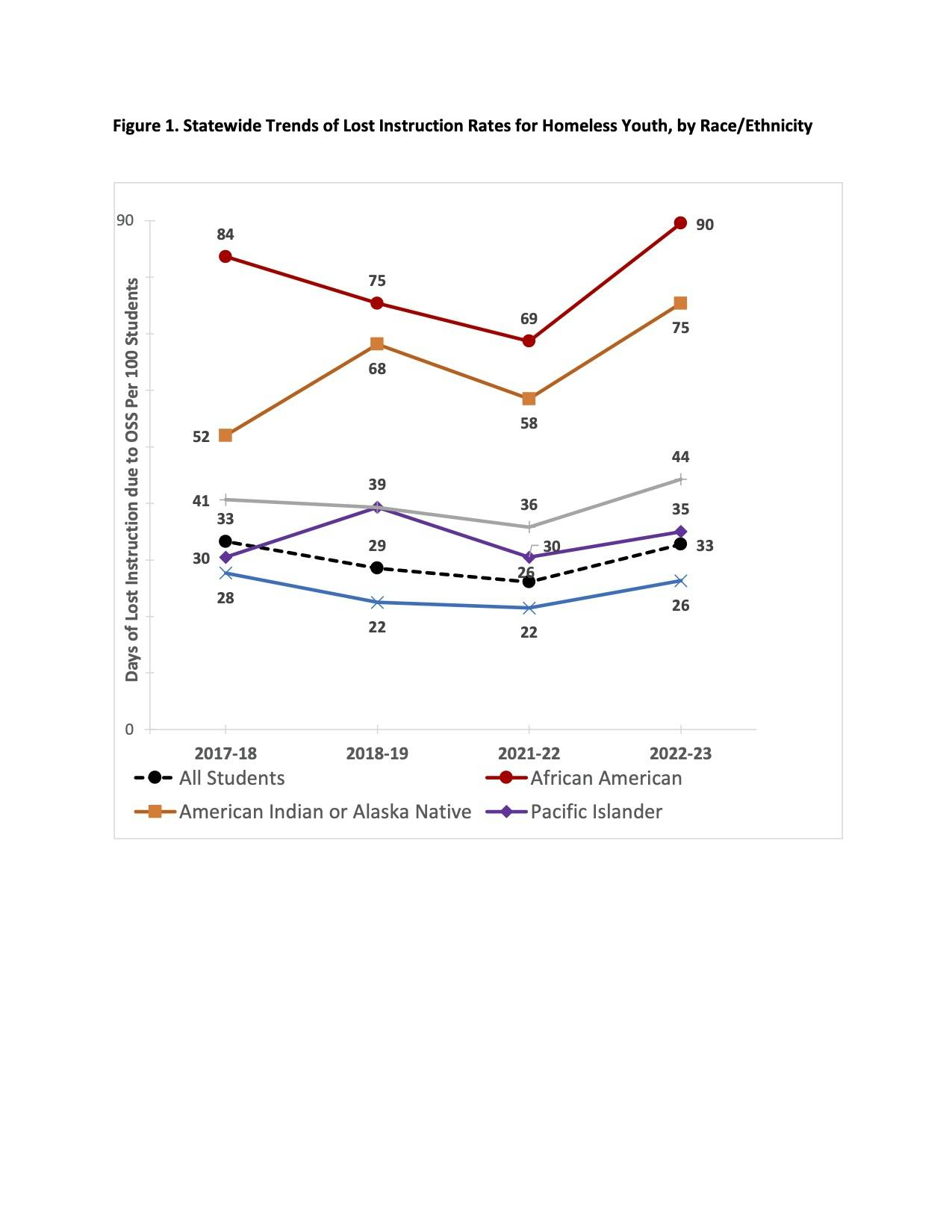New data show California schools increased disciplinary exclusion of homeless youth
Rate of lost instruction is highest in 6 years
After years of declining rates, a new analysis of 2023 data from the California Department of Education finds an alarming increase in out-of-school suspensions for homeless youth from public schools in the state, with Black and Native American Homeless youth experiencing the highest rates of lost instruction due to out-of-school suspensions
Specifically, Black homeless youth are losing an average of 90 school days per 100 enrolled students due to disciplinary removals in 2023, an increase of 21 days from 69 the year before. (As previously reported in “Lost Instruction Time in California Schools: The Disparate Harm from Post-Pandemic Punitive Suspensions,” published in October 2023). Native American homeless youth lost 75 days per 100 enrolled — an increase of 17 days from the rate of 58 in 2022. These rates of lost instruction are 7 to 10 times higher than the state average for all students, which also increased in 2023.

These troubling trends are the latest findings from updated research conducted by Ramon Flores of the Civil Rights Project at UCLA and Dan Losen, Director of Education at the National Center for Youth Law. The complete update of the statewide rates for 2023 covers every racial/ethnic group, and students with disabilities.
"CDE needs to seriously increase their oversight of districts that are failing to meet the needs of youth of color, especially those who arrive at school from unstable home environments,” said Flores, with UCLA.
“While some of these students may have access to shelters, in many cases these children are literally being sent to the streets,” adds Losen.”
“The higher rates likely reflect unjustifiable resource cuts, and/or maintaining unjustifiable discipline policies amidst an increase in the needs of students. Moreover, districts that cause high and racially disproportionate harm to homeless youth, foster youth, and students with disabilities are likely violating the civil rights of these students.”
The complete updated analysis is available here.
For additional information, contact Dan Losen at dlosen@youthlaw.org